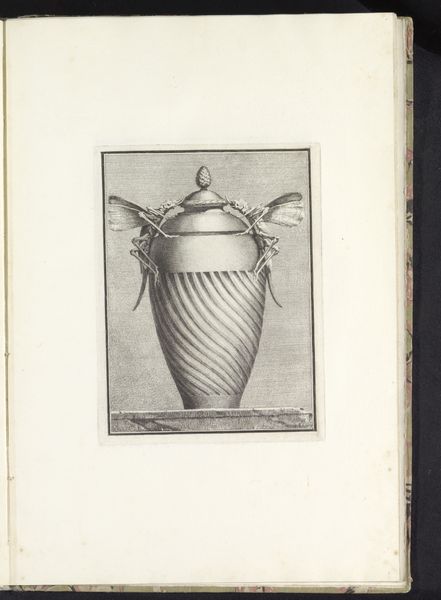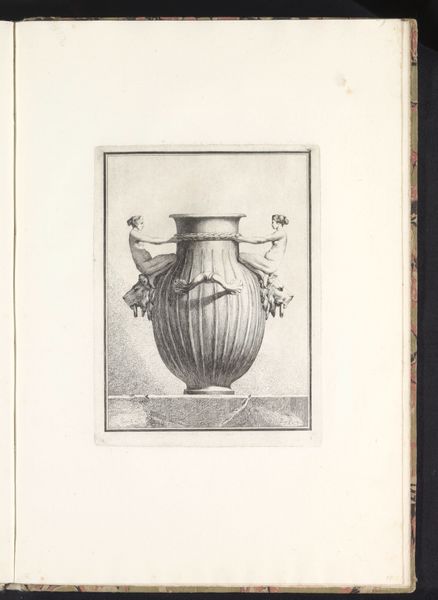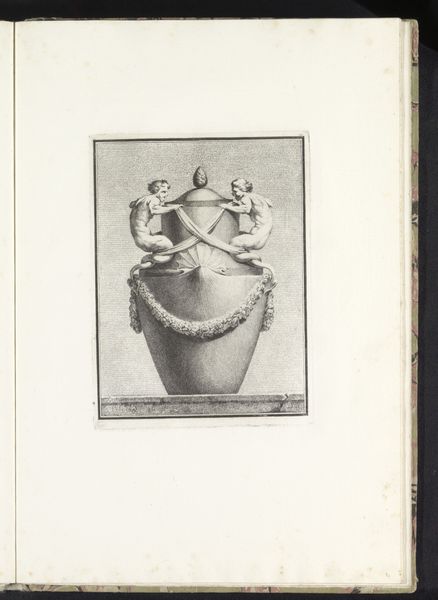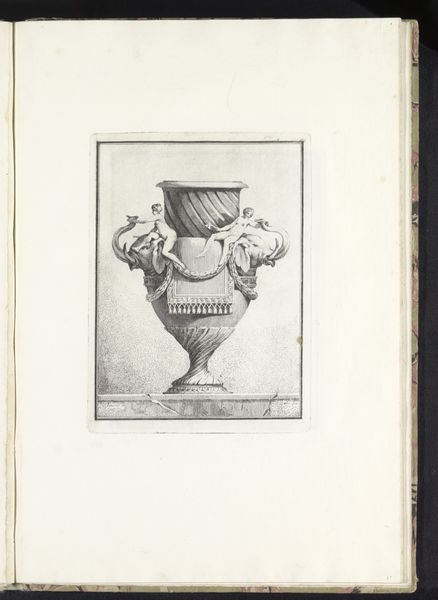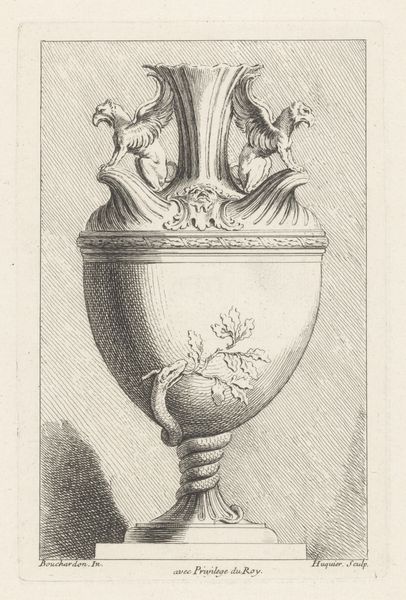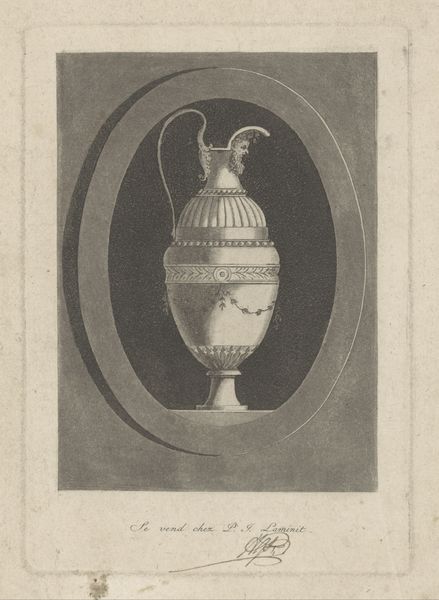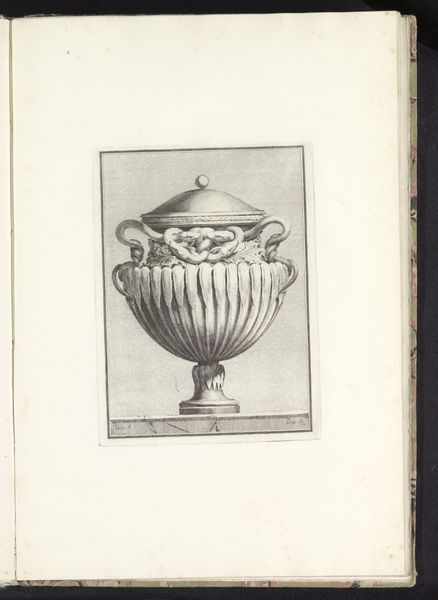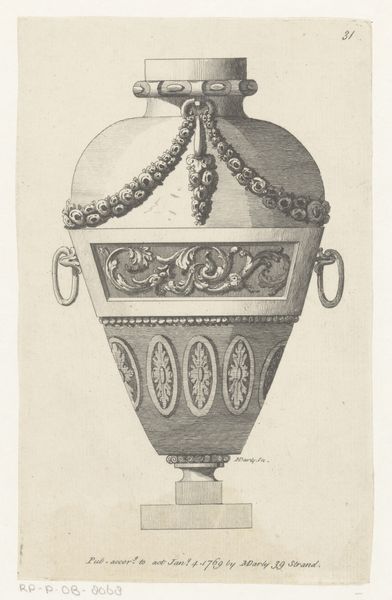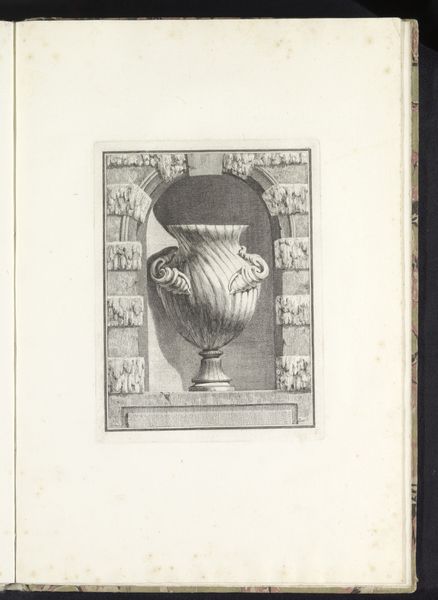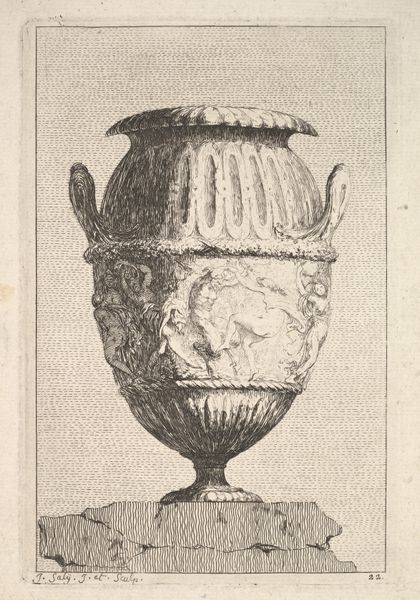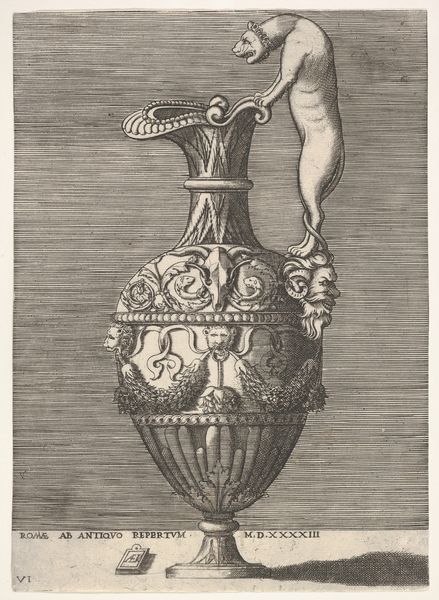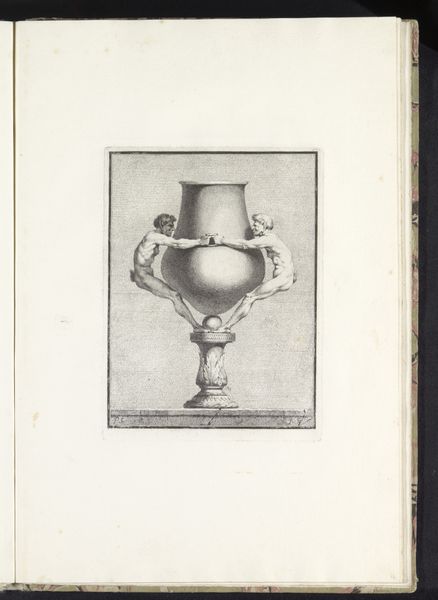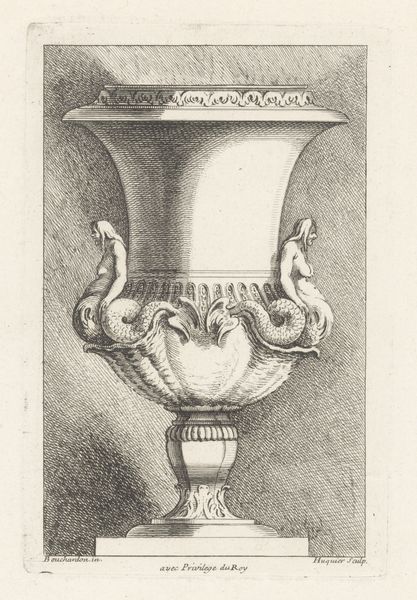
Plate from Suite des Vases Tirée du Cabinet de Monsieur Du Tillot 1764
0:00
0:00
Dimensions: 9 x 6 1/2 in. (22.86 x 16.51 cm) (plate, each varies)17 3/4 x 11 1/2 in. (45.09 x 29.21 cm) (sheet)
Copyright: Public Domain
Editor: So, this is *Plate from Suite des Vases Tirée du Cabinet de Monsieur Du Tillot*, an etching by Ennemond Alexandre Petitot from 1764. It's got this wonderfully ornate vase with... are those dragons? They’re certainly eye-catching! How do you see this piece within its historical context? Curator: This print offers a fascinating glimpse into the decorative tastes and aristocratic aspirations of the 18th century. The Rococo and Baroque styles blend to represent not just luxury but power and taste, which were displayed, possessed, and curated. Can you imagine how these vases would be displayed? Editor: I imagine them displayed proudly. It screams wealth and status, and is literally elevated. But I’m wondering, why immortalize a vase in a print? It seems so specific. Curator: Exactly! Prints like these served multiple purposes. First, they disseminated designs. Aristocrats could see the latest trends and commission similar items. Also, this image serves as a record, a controlled dissemination. The vase, in this printed form, gains another layer of prestige and endurance. What about the vase form? Itself! What associations might it invoke? Editor: Ancient Greece, maybe? A link to the past to claim lineage? Curator: Precisely! Think about it - by alluding to classical forms, even through something "merely" decorative like this, they are also laying claim to an inheritance: power, knowledge, good taste, the foundations of Western civilization... all funneled and displayed through objects. Does that change your reading? Editor: It makes the vase feel less like a simple vessel and more like a political statement, packaged as art! I didn't expect such complexity! Curator: That's often the case. Examining how art operates within society is key. Remember, these weren't simply pretty objects; they were active participants in constructing identity and asserting dominance. Editor: It's great to have a perspective beyond the aesthetic, to see art working within power structures. Thanks for helping me see that.
Comments
No comments
Be the first to comment and join the conversation on the ultimate creative platform.
